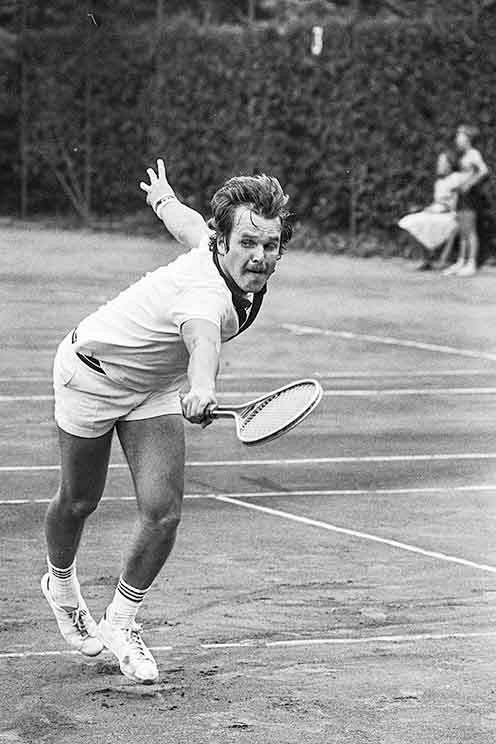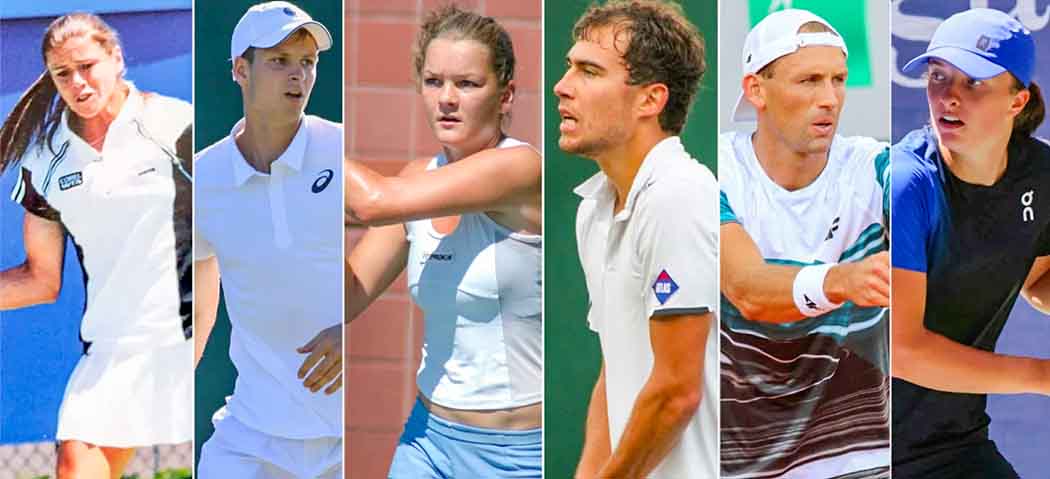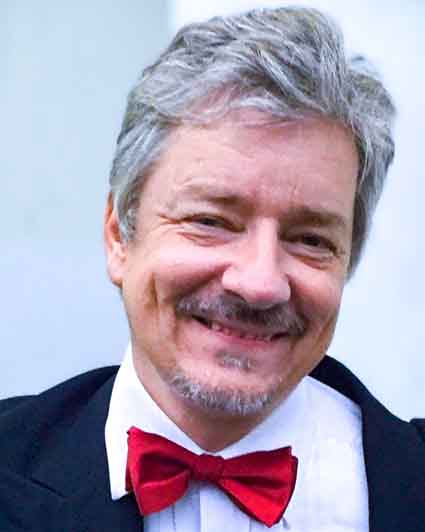While professional tennis flourished in the West after World War II, it was unable to flourish in Poland at all. In communist countries, professional sport was banned for ideological reasons. Tennis, even amateur, was a non-Olympic sport at the time and considered "bourgeois" by the authorities and remained marginalized and underfunded until the late 1980s.
Wojciech Fibak
The first Pole to achieve international success in the Open Era (i.e., after the division between professional and amateur tennis was abolished in 1968) was Wojciech Fibak. The Poznań native decided to permanently leave the country—where tennis infrastructure was practically nonexistent—in the fall of 1974, allowing him to develop his talent and connect with the world's elite. He triumphed in numerous Grand Prix tournaments. In 1976, he was runner-up at the Masters in singles. He also achieved considerable success in doubles, including with Kim Warwick. In 1980, he competed in the French Open, the US Open, and Wimbledon, reaching the quarterfinals.

Wojciech Fibak in 1976 (Source: Wikipedia)
Wojciech Fibak played a key role in the development of tennis in Poland, becoming not only one of the greatest Polish tennis players in history but also an important ambassador for the sport. His successes in the 1970s and 1980s, particularly his multiple ATP tournament victories and reaching the top ten in the world rankings, significantly increased interest in tennis in the country at a time when the sport was just beginning to gain mass popularity.
During those years, Fibak became much more than just a great tennis player for Poles—he was a sports icon whose matches connected generations. When he appeared on court at Grand Slam tournaments or prestigious ATP events, entire families gathered around their televisions, often late at night, to follow his every point.
In a time of limited access to sports broadcasts and modest international success for Poles, Fibak was a breath of worldliness, a symbol of possibility, and proof that an athlete from Poland could compete with the world's best. His offensive, intelligent, and elegant style of play fascinated, and his presence among the world's elite inspired young players who would later become the next generation of Polish tennis players. In this way, Fibak not only raised the standard of Polish tennis but also instilled a genuine passion for the sport in society.
After retiring, Fibak remained active as a mentor, commentator, and promoter of young talent, repeatedly emphasizing the importance of professionalism, grassroots work, and an international perspective in training players. His work—both in the media and organizationally, such as in challenger tournaments and local tennis initiatives—laid the foundations upon which future generations of Polish tennis players are building today.
It is no exaggeration to say that without Fibak it would be difficult to imagine the subsequent development of Polish tennis, culminating in the successes of Agnieszka Radwańska, Hubert Hurkacz and Iga Świątek.
Only one tennis court in the country
For decades, Poland had only one truly professional tennis facility – the MERA Warsaw Tennis Club. After the socio-political and economic transformations, we were starting from scratch, and in the early 1990s, Poland was still a backward country. Fortunately, thanks to the tremendous work and dedication of tennis enthusiasts, we were slowly catching up.

Polish tennis stars (from left): Katarzyna Nowak, Hubert Hurkacz, Agnieszka Radwańska, Jerzy Janowicz, Łukasz Kubot, Iga Świątek (Source: DlaPolonii.pl)
One of the people who demonstrated the greatest determination in this regard was Katarzyna Nowak (pictured above, first from the left) – a pioneer of professional tennis in our country. Despite constant obstacles in her path at the time, she bravely faced the grim reality. First, she defeated the world's best junior players (in 1987, she was ranked 7th in the world in the ITF Junior Rankings), and then, already in her professional career, in 1995, she became the first Polish woman to break into the top 50 of the WTA rankings! She was, and remains, an irreplaceable source of inspiration for generations of tennis players.
In 1992, she competed in the Olympic Games in Barcelona, becoming the first Polish female tennis Olympian. This was a historic event that initiated a change in attitudes towards the sport in Poland. This ultimately led to the launch of financial support, the expansion of infrastructure, the organization of international tournaments, and the creation of a foundation for the development of tennis in our country. This was, of course, a long-term process that, years later, led to remarkable successes for players such as Agnieszka Radwańska, Jerzy Janowicz, Łukasz Kubot, and Iga Świątek.
Since the mid-1990s, Poland's top female tennis players have included Aleksandra Olsza from Katowice and Magdalena Grzybowska from Poznań. The latter achieved her greatest success as a junior, winning the Wimbledon singles and doubles tournaments and finishing runner-up with Anna Kurnikowa. Until Agnieszka Radwańska, she was the highest-ranked Polish tennis player. In August 1998, she was ranked 30th in the WTA rankings. Unfortunately, that same year, she suffered a knee injury that sidelined her for an extended period and derailed her burgeoning career.
The most spectacular success in Agnieszka Radwańska's career (pictured third from left) was reaching the Grand Slam final at Wimbledon, with a prize pool exceeding £16 million. We've been waiting for the Polish player to play in the final of this incredibly prestigious tournament for… 75 years! That's how long it's been since the memorable 1937, when Jadwiga Jędrzejowska reached just as far on grass courts. In 2012, history repeated itself, as the Krakow native, like the famous "Jadzia," was no match for her final opponent, the superbly fit Serena Williams. The then 23-year-old Radwańska lost to the American in her first Grand Slam final in a three-set match: 1-6, 7-5, 2-6.
Despite the loss to Williams, Agnieszka Radwańska rose to second place in the WTA rankings, the highest ever held by a Polish tennis player. The next significant success in the Kraków-born player's sporting career was victory in the 2015 Tournament of Champions – the WTA Finals, a tournament featuring the top eight players of the year. In the final, Radwańska demonstrated excellent play and defeated the Czech titleholder Petra Kvitova 6-2, 4-6, 6-3. This achievement resonated widely in the tennis community, bringing the Polish tennis player numerous accolades. It also earned her a check for a record-breaking sum of over $2 million.
Wimbledon also brought global recognition to Jerzy Janowicz (pictured, fourth from left). The Łódź-born tennis player, a year after Agnieszka Radwańska's success, reached the semifinals on grass courts, marking the greatest success in the history of Polish men's tennis at a Grand Slam tournament. A historic event also occurred in the previous round of the tournament, when two Poles faced off in the quarterfinals of this tournament, with Janowicz eliminating Łukasz Kubot. In 2015, after victories over Lithuania (3-2), Ukraine (3-1), and Slovakia (3-2), the Poles advanced to the elite group of the top 16 teams in the Davies Cup for the first time in history.
Łukasz Kubot (pictured second from right) is the first Pole since Wojciech Fibak to be ranked in the ATP Top 100 (and later in the Top 50). In April 2010, he was ranked 41st. That same year, he reached the fourth round of the Australian Open. Kubot's greatest successes, however, have been in doubles. In 2017, he won the Wimbledon tournament in that tournament, partnering Brazilian Marcelo Melo. This was the second Grand Slam doubles title in the Polish tennis player's career. Three years earlier, the Lubin native won the Australian Open alongside Swede Robert Lindstedt.
The first Polish winner of an ATP Tour Masters 1000 tournament was Hubert Hurkacz (second from left in the photo) – he won in Miami in 2021. He is also the second Polish semifinalist at Wimbledon (2021), after Janowicz. In June 2024, he was ranked 6th in the ATP Tour rankings.
Iga Świątek
In recent years, Warsaw-born Iga Świątek (first from the right in the first photo above) has become a star of Polish tennis. Born on May 31, 2001, she turned professional in 2016 at the age of 15, winning her debut ITF professional tournament in Stockholm (with a $10,000 prize). After winning the junior Wimbledon in July 2018, she decided to end her junior career and begin building her WTA ranking.
In 2019, as an 18-year-old, she reached the fourth round of the French Open, losing to Romanian Simona Halep, but a year later she won the same tournament, becoming the first Polish woman to win a Grand Slam singles title.
2022 was a memorable year in her career – on April 4th, she became the first Polish woman to top the WTA rankings, and she remained in the lead for the next 75 weeks. She reached the semifinals of Wimbledon, losing only to American Danielle Collins. Then came a string of impressive victories in several tournaments in a row. In 2023, she triumphed again at Roland Garross. She repeated this success in 2024, achieving her fourth individual victory at the French Open.
At the 2024 Olympic Games in Paris, Iga Świątek won the first Olympic medal for Polish tennis – a bronze – in the singles. In the semifinals, she lost to Zheng of China (2-6, 5-7), and in the third-place match, she defeated Schmiedlova of Slovakia (6-2, 6-1).

Iga Świątek during the 2023 US Open (Source: Wikipedia)
In 2025, Iga Świątek started the season at number 2 in the WTA rankings and continued her domination of the world tennis scene, recording an outstanding record of 62 wins and 17 losses.
She won three titles during the season, including a crucial victory at the 2025 Wimbledon Championships – her first career victory on grass, which also marked her sixth Grand Slam title. At the prestigious 2025 Cincinnati Open, she defeated Jasmina Paolini in the final, winning without dropping a set. Her reign on clay at the 2025 French Open was interrupted in the semifinals, ending her winning streak in Paris.
Thanks to these achievements, Świątek once again found herself among the tennis players who finished the season in the Top 2 of the world rankings – making her one of the few to have achieved this four times in a row.
Wojciech Fibak said this about her in 2025:
My eye still sees Iga as the best in the world in many key aspects of tennis. She's the fastest and most agile, the most motivated, the most combative, and no one surpasses her in terms of mental strength.
Her performances in 2025 confirmed that she can win on various surfaces – hard, clay and finally grass – which puts her in the narrow group of all-around champions.








